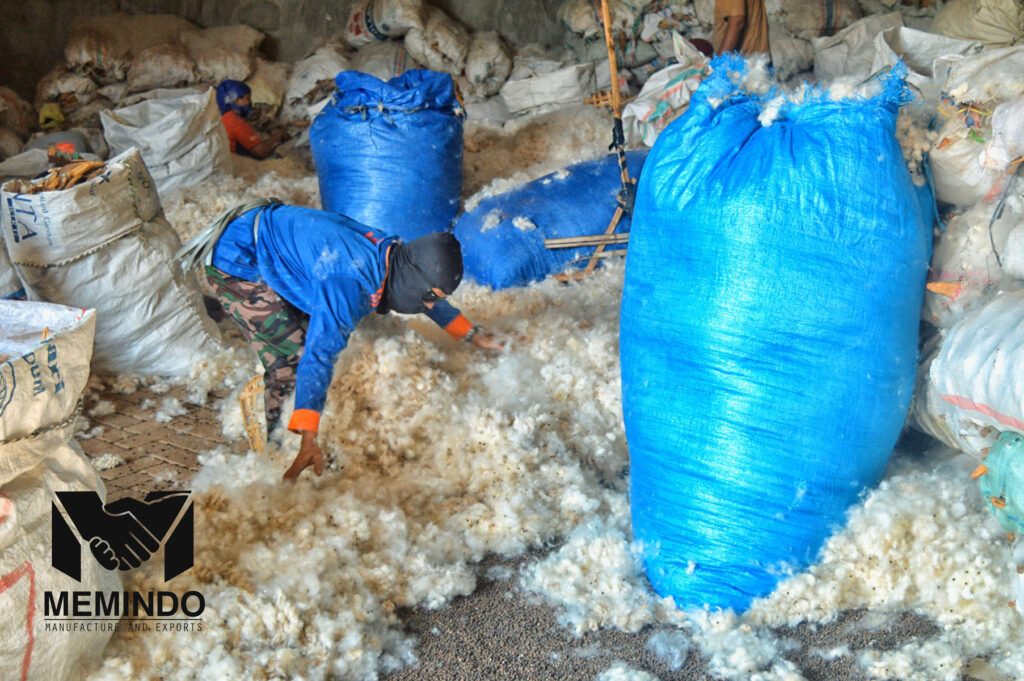Kapok, a naturally occurring fiber from the seed pods of the kapok tree, holds a significant social value in many tropical regions like Indonesia. Beyond its economic utility, kapok has deep connections to the cultural, social, and environmental lives of the communities that cultivate and use it. Here’s a look at how kapok influences and supports various aspects of rural societies:
1. Supporting Rural Livelihoods
Kapok plays a key role in the livelihoods of many rural farmers, especially in regions where agricultural diversity is limited. Since the kapok tree grows easily in tropical climates without the need for intensive care, it has become an essential crop for smallholder farmers. Its low maintenance costs and regular yield offer a reliable source of income.
For many families, the revenue generated from kapok is vital in covering basic necessities such as food, clothing, education, and healthcare. By providing an additional source of income, kapok helps lift families out of poverty, reducing their dependence on subsistence farming alone.
2. Preserving Traditional Craftsmanship
Kapok fiber has been used for generations in the making of mattresses, pillows, and other household items. The craft of working with kapok is often passed down within families and communities, becoming part of their cultural heritage. Artisans who create these items typically rely on age-old methods, and their skills contribute to the preservation of traditional craftsmanship.
This cultural continuity is vital for maintaining a sense of identity and pride in local traditions. Communities that engage in kapok-based production have a unique opportunity to preserve their heritage while also adapting to modern markets that appreciate handmade, natural products.
3. Empowering Local Women
The kapok industry also provides important opportunities for women in rural areas. Women are often involved in the labor-intensive processing of kapok, such as removing seeds, cleaning the fibers, and preparing them for use in textiles or home goods. This work allows women to earn additional income for their households.
In many instances, the economic independence gained from working with kapok empowers women, giving them a greater say in household finances and decision-making. This shift in economic power not only helps improve gender equality but also strengthens the social fabric by allowing women to contribute more directly to their families’ well-being.
4. Contributing to Social Enterprises and Cooperatives
Kapok production often fosters community-driven initiatives such as cooperatives and social enterprises. Farmers and artisans collaborate to form groups that oversee the production, processing, and sale of kapok-based products. These cooperatives allow for better access to markets, collective bargaining, and a fairer distribution of profits.
Social enterprises centered around kapok also invest in community development projects. By reinvesting profits into local infrastructure, schools, or healthcare, these initiatives help elevate the entire community. This collective approach strengthens local economies and enhances social solidarity.

5. Environmental Stewardship and Sustainability
The kapok tree not only provides fiber but also plays a crucial role in environmental conservation. The cultivation of kapok trees contributes to reforestation and improves soil health by preventing erosion. Since kapok requires minimal use of fertilizers or pesticides, it supports eco-friendly farming practices that have a lower environmental impact.
As consumers around the world grow more conscious of the need for sustainable, natural products, kapok-based goods have gained popularity. The fiber is biodegradable, lightweight, and hypoallergenic, making it an environmentally responsible alternative to synthetic materials like polyester. By promoting the use of kapok, communities contribute to global efforts to reduce plastic waste and embrace more sustainable production methods.
6. Cultural and Social Importance
Kapok is not just a commodity; it is deeply embedded in the cultural practices of the regions where it grows. In many communities, kapok is used in traditional ceremonies and events, symbolizing purity, natural abundance, and continuity. For example, kapok-filled cushions and mattresses are often part of wedding gifts or household blessings in certain cultures, symbolizing comfort and well-being for the family.
These cultural associations help strengthen the sense of belonging and identity within communities. Kapok brings people together, whether through its production, use in ceremonies, or as a symbol of the natural connection between people and their environment.
Conclusion
Kapok is more than a simple natural fiber; it is a key part of the social and economic fabric in many rural communities. Its cultivation supports livelihoods, empowers women, preserves cultural traditions, and fosters community-driven enterprises. Furthermore, its environmentally sustainable nature aligns with the growing global demand for eco-friendly products.
As the world becomes more attuned to the benefits of natural, sustainable resources, kapok stands as a symbol of how traditional practices can provide modern solutions. Its role in rural societies goes beyond economics, representing a bridge between heritage, community, and the future of sustainable development.
Contact Us :
☎️ : +62 85933133244
📍 : Jl.Ir Soekarno, No.122, Dadaprejo, Junrejo, Kota Batu, East Java 65323

